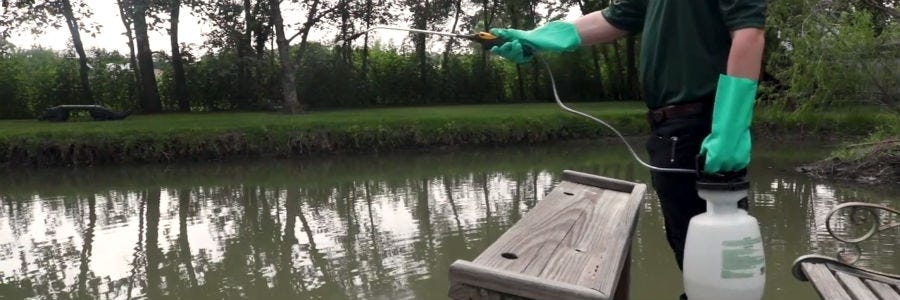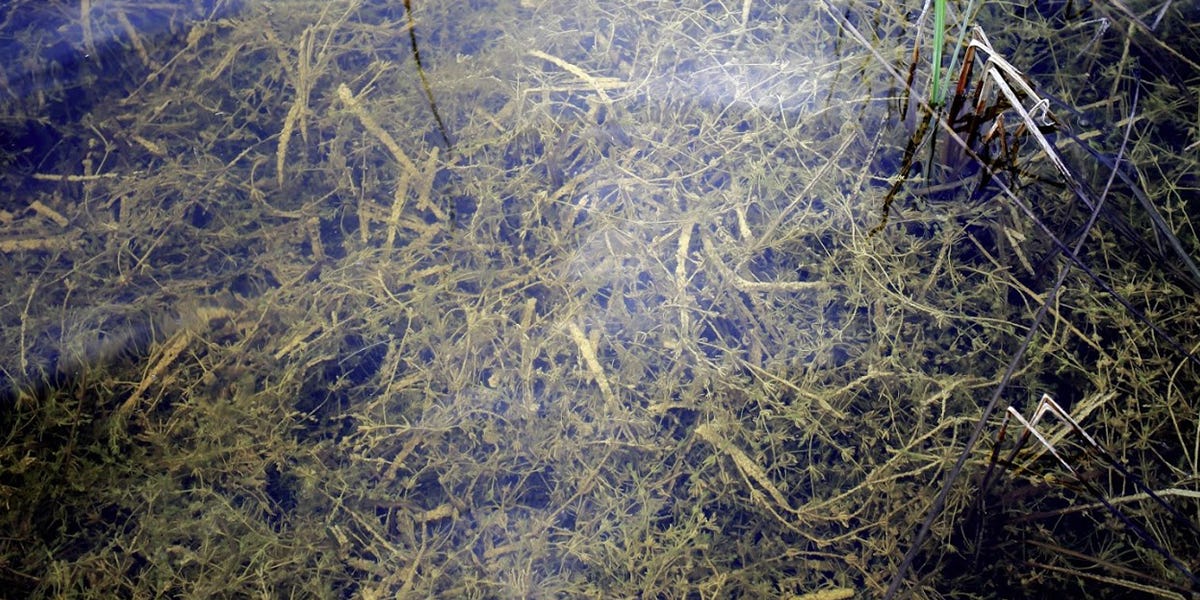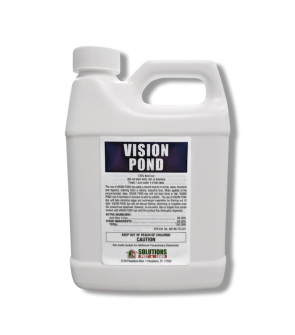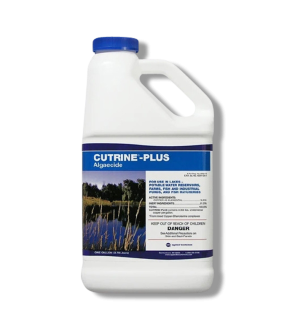Gain access to personalized product screening, the best pricing, rewards, and more!
Most Effective Products
Muskgrass Control: How To Get Rid of Muskgrass
A common aquatic weed that can invade ponds and ugly up the aesthetics of waterbodies is Muskgrass. Also known by other names such as Chara and Skunkweed, Muskgrass isn't actually a grass at all but rather is an algae which grows at the bottom of a pond or lake and makes its way to the surface. If left untreated long enough, it can quickly take over the body of water where they are established.
The real annoying thing about this aquatic weed is that it has an off-putting smell as well. Muskgrass gets its name because of its strong, musky odor that resembles the foul smell of garlic.
Muskgrass can become a problem when it grows in large numbers because it reduces available fish habitat, clogs intakes on irrigation lakes for golf courses, and makes recreational activities like swimming or boating difficult. If your body of water has a case of Muskgrass growing on it, Solutions Pest and Lawn can help with our aquatic herbicide and algaecide products.
Follow our DIY Muskgrass control guide below to eliminate Muskgrass quickly and affordably.
Identification

Muskgrass is a branched multicellular type of algae that is grayish-green colored and is often confused with submerged flowering plants. Muskgrass does not have any flowers, nor does it stick out above the water surface, and often has a grainy or crunchy texture.
Muskgrass branches are cylinder-shaped and come in whorled form with between 6 to 16 branchlets form around each node. Muskgrass does bring some benefit to the aquatic ecosystem by stabilizing sediments at the bottom of water bodies and providing nourishment and cover for fish. Muskgrass also lends support to insects and other small aquatic animals, which are an important part of the diet for trout, bluegills, smallmouth bass, and largemouth bass.
Use our description and image to help you to identify the weed you see as Muskgrass. As always, if you are stuck and need help, contact us with a high-quality image of the weed and we will have our experts correctly identify it for you.
Inspection

Walk around your pond or water body to determine how big of a Muskgrass problem you have. Before treatment, you should also take into consideration what the water is used for (drinking, recreation, swimming etc.) the type of waterfowl and fishes that live in the water as well as the other vegetation you desire to have in the water.
Where To Inspect
Muskgrass likes to grow attached to the bottoms of ponds, lakes, slow-moving rivers and ditches and sometimes form underwater meadows. Muskgrass prefers hard calcium-rich waters.
What To Look For
Muskgrass has a strong garlicky odor that you won't forget if you get a whiff of it. If you have large outbreaks of it on your lawn, it will be easy to spot due to its tiny spines and smell.
Treatment
Muskgrass is a type of algae so for this product we recommend using a product that contains copper based compounds or alkylamine salts of Endothall.
Our recommendation is Cutrine Plus Algaecide, which contains an active ingredient of copper ethanolamine complex 27.9%. This emulsifiable concentrate works to eliminate a range of algae within 24 to 48 hours.
Make sure before applying the product that you have on the proper personal protection equipment (PPE) that will protect your face, mouth, eyes, hands, and feet.
Step 1 - Mix and Apply Cutrine Plus

Cutrine Plus is a low cost copper-based algaecide that is labeled to control Muskgrass/Chara. Determine how much Cutrine Plus you will need by first calculating the size of your water body in surface acres. To do this, measure the length, width, and average depths of the body of water within the area being treated then follow the formula on the label to determine the acre-feet (Length (ft.) x Width (ft.) x Average Depth (ft.) / 43,560 = Acre-feet).
For typical algae applications, 1 gallon of Cutrine Plus can treat 1.5 acre-feet of water. So if you have a 6 acre pond, you would need 4 gallons of Cutrine Plus. For small handpump or backpack sprayer applications, use a 9:1 dilution ratio (1 gallon of Cutrine Plus to 9 gallons of water) or a 50:1 dilution ratio when using water pump equipment or large tank sprayers.
Apply the Cutrine Plus mixture over the water surface in rain sized droplets to evenly cover the water surface, taking the water depth into consideration. Alternatively, you can use a water injection system or weighted hose to treat Muskgrass at the bottom of the pond.
Step 2 - Follow Up Applications
Muskgrass reproduces rapidly so it may take repeated application during the growing season to keep its growth under control.
If the pond is heavily infested with Muskgrass, it may be necessary to treat the pond or lake in sections and let each section decompose for about two weeks before treating another section.
Prevention
Apply Vision Pond Dye to help you to prevent Muskgrass from coming back after applying herbicides. Vision Pond Dye interferes with plant development by filtering UV light into the water so plants won't grow. On top of that, it also improves the look of your pond by giving it a natural blue color.
Measure the appropriate amount of Vision Pond Dye into a bucket based on your pond area measurement findings. The label recommends applying at a rate of 1 quart per 1 surface acre of water at a 5-foot average depth.
Pour the pond dye over the edge directly into the body of water and the water's natural movement will disperse the dye.
Key Takeaways
- Muskgrass is a type of macro-alga that is rough to the touch and is known for its stinky smell.
- To get rid of Muskgrass, we recommend applying Cutrine Plus as it does a great job in eliminating the problem weed.
- Follow up regularly and apply Vision Pond Dye to discourage Muskgrass from reestablishing.










